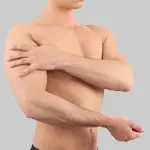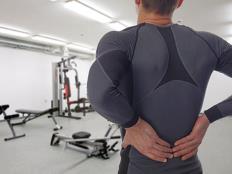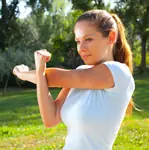
The rotator cuff is made up of a group of tendons that surround the top, rear and front of the shoulder. The tendons are all separately connected to short muscles that stem from the shoulder blades. The tendons and muscles help move and stabilize the shoulder joints and adjust the position of the humeral head (the upper end of the bone of the upper arm) and the scapula (shoulder blade) during shoulder movement. When these muscles contract, they pull on the rotator cuff tendon, which causes the shoulder to rotate inward, downward and upward.
Injuries to muscle-tendon units are called strains and are classified by different levels, depending on the severity of the damage. The least damaging involves the fibers of the muscles and tendons being stretched out, without any tears. A little more serious injury is when the muscle or tendon has a slight tear. The most severe injury is when there is a complete tear in the muscle or tendon.
Damage to these muscles and tendons can occur from small injuries, like falling, to overuse of the muscle, such as lifting. Damage can also be from gradual degeneration of the muscle and tendon that occurs with aging.
Rotator cuff injuries are most common in men over the age of 65. However, many adolescents are at risk if they're involved in overhead movement sports, such as basketball, baseball, tennis, volleyball and swimming.
It's important to do proper exercises to avoid a rotator cuff injury. Warming up the body before doing a vigorous activity is necessary. Without proper conditioning, the shoulder can become inflamed pretty quickly. Stretching your shoulders and arms should be your per-lifting training plan.
To strengthen your rotator cuff, it's best to use lower resistance with more repetitions. Low resistance exercises gradually strengthen these small muscles without the risk of injury. The rotator cuff muscles are relatively small, keep the movement slow and controlled.
It's important to do strengthening exercises to promote a balanced strength in the shoulder, such as arm raises to the side, external rotation, and "hug a tree" stretches. If you've had a previous injury, taking breaks throughout the day to do arm and shoulder stretches will help in preventing any future injuries. Resting your shoulders before a workout can also alleviate some stress in the rotator cuff. Frequent massages and cold and hot compresses can also aid in reducing inflammation.
 Sign up for a strength training class.
Sign up for a strength training class.
About the Author

Get ACTIVE on the Go


Couch to 5K®
The best way to get new runners off the couch and across the finish line of their first 5K.
Available for iOS | Android







Discuss This Article